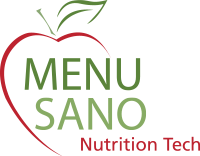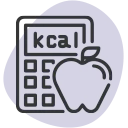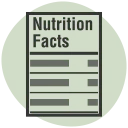Navigating FDA regulations for food labelling claims can make or break your product’s market success. Understanding the critical differences between health claims, nutrient content claims, and structure-function claims isn’t just about compliance—it’s about maximizing your marketing potential while avoiding costly regulatory violations. This comprehensive guide will help food service professionals master and implement these claim types strategically.
Key Takeaways
- Three distinct claim types serve different marketing and regulatory purposes for food businesses
- Health claims link foods to disease risk reduction and require FDA pre-approval
- Nutrient content claims describe nutrient levels and follow standardized FDA definitions
- Structure-function claims describe how nutrients affect normal body functions without FDA pre-approval
- Compliance requirements vary significantly between claim types, affecting marketing strategies
- Professional nutrition analysis software ensures accurate claim substantiation and regulatory compliance
- Strategic claim selection can differentiate products and support premium positioning
Understanding the Three Types of Food Label Claims
For food manufacturers, restaurants, and other food service businesses, making accurate claims about your products’ nutritional benefits is essential for competitive positioning. However, the FDA strictly regulates how these claims can be made, with three primary categories governing different types of statements.
What is a Nutrient Content Claim?
A nutrient content claim describes a specific nutrient level in a food product relative to established FDA standards. These claims characterize whether a product is high, low, or free of particular nutrients, providing consumers with quick nutritional assessments.
Defining Nutrient Claim Standards
Nutrient claims must meet specific FDA criteria. For example, to claim “low sodium,” a product must contain 140mg or less per serving. To claim “high fibre,” a product must provide 20% or more of the Daily Value for fibre per serving.
Health Claims: Linking Food to Disease Prevention
Health claims represent the most regulated category, describing relationships between foods and reduced disease risk. These claims require substantial scientific evidence and FDA review before implementation.
Examples of Health Claims
Authorized Health Claims:
- “Diets low in sodium may reduce the risk of high blood pressure.”
- “Adequate calcium and vitamin D may reduce the risk of osteoporosis.”
- “Soluble fibre from oats may reduce the risk of heart disease.”
Qualified Health Claims:
- “Some scientific evidence suggests that consumption of antioxidant vitamins may reduce the risk of certain forms of cancer. However, the FDA has determined that this evidence is limited and inconclusive.”
Health Claim Requirements for Food Businesses
- Pre-market approval is required from the FDA
- Substantial scientific agreement must support the claim
- The FDA often mandates specific wording
- Product reformulation may be necessary to qualify
- Extensive documentation is required for submission
Nutrient Content Claims: Describing Nutritional Levels
Nutrient content claims offer food businesses the most straightforward path to highlighting nutritional benefits without requiring pre-approval.
Examples of Nutrient Claims
Common Nutrient Content Claims:
- “Low fat” (3g or less per serving)
- “High protein” (20% or more of Daily Value)
- “Good source of fibre” (10-19% of Daily Value)
- “Reduced sodium” (25% less than the regular version)
- “Fat-free” (less than 0.5g per serving)
What is a Nutrient Content Claim Strategy
Food service businesses can strategically use nutrient content claims to:
- Differentiate products in competitive markets: Nutrient content claims help food service businesses stand out by clearly communicating the health benefits of their offerings. Labels like “low sodium” or “high in fibre” can set products apart in crowded marketplaces where consumers actively compare options.
- Support premium pricing for healthier formulations: Health-conscious consumers are often willing to pay more for foods that support their dietary goals. By using accurate nutrient content claims, businesses can justify premium pricing and reinforce the value of their healthier recipes.
- Meet institutional requirements for schools and healthcare: Schools, hospitals, and senior care facilities often have strict nutritional guidelines. Using nutrient content claims ensures food offerings meet compliance standards, making your products more attractive to these regulated sectors.
- Align with consumer trends toward healthier options: With rising demand for wellness and clean eating, nutrient content claims speak directly to modern consumer priorities. Highlighting positive nutritional attributes positions your business as responsive to evolving dietary trends.
Nutrient Content Claim Requirements

- FDA standardized definitions must be followed exactly: When using nutrient content claims, businesses must adhere strictly to the FDA’s standardized definitions. Terms like “low fat” or “excellent source of calcium” have specific criteria that cannot be altered or loosely interpreted.
- Serving size consistency is required for comparisons: Claims must be based on a consistent serving size to ensure accurate comparisons across products. This allows consumers to make informed decisions and prevents misleading information on labels.
- Laboratory analysis or database verification is needed: To support any claim, nutrient values must be verified through reliable sources, such as laboratory testing or credible nutrition databases. This step ensures accuracy and compliance with FDA regulations.
- Label formatting must comply with FDA guidelines: The placement, font size, and wording of nutrient claims must follow FDA formatting rules. Proper presentation helps maintain transparency and avoids consumer confusion.
- No pre-approval required, but claims must be substantiated: While the FDA doesn’t require pre-approval for nutrient content claims, businesses are responsible for having the evidence to back them up. If challenged, unsubstantiated claims can lead to penalties or recalls.
Structure/Function Claims: Describing Normal Body Functions
Structure-function claims describe how nutrients or ingredients affect normal body structure or function, offering food businesses flexibility in marketing without FDA pre-approval. For example, a product might state that “calcium helps build strong bones” or “fibre supports digestive health.” These types of claims do not refer to the treatment or prevention of disease, which would require a different regulatory pathway. While pre-approval isn’t necessary, businesses are still responsible for ensuring that these claims are truthful, not misleading, and supported by credible scientific evidence. Proper documentation and consistency with FDA guidelines are essential to avoid enforcement actions or consumer mistrust.
What is a Structure/Function Claim?
Structure-function claims explain how nutrients support normal bodily functions or maintain healthy structures. Unlike health claims, they cannot refer to disease prevention or treatment. For instance, saying “vitamin C supports immune function” is acceptable, while “vitamin C prevents colds” would not be. These claims focus on the role of a nutrient in the body’s everyday health and must be based on generally accepted scientific evidence. Although they don’t require FDA approval, they must include a disclaimer stating the FDA has not evaluated the claim, mainly when used on dietary supplements.
Examples of Structure/Function Claims
Acceptable Structure/Function Claims:
- “Calcium builds strong bones.”
- “Protein helps build muscle.”
- “Iron supports energy metabolism.”
- “Antioxidants help maintain cellular health.”
- “Omega-3 fatty acids support brain function.”
Structure/Function Claim Requirements
- No FDA pre-approval required: Structure-function claims can be used without prior FDA approval, allowing businesses to bring products to market more quickly. This gives food and supplement companies greater flexibility in promoting the general benefits of their ingredients.
- Substantiation required but not submitted to the FDA: Although the FDA does not require companies to submit evidence in advance, businesses must have scientific substantiation. This means claims must be supported by credible research and documentation in case of inspection or inquiry.
- Cannot reference diseases or medical conditions: Structure-function claims must avoid any mention of diagnosing, treating, curing, or preventing diseases. Referring to medical conditions shifts the claim into “health claim” territory, subject to more stringent FDA oversight.
- Must include a disclaimer for dietary supplements: When used on dietary supplements, structure-function claims must be accompanied by a specific FDA disclaimer. The standard statement is: “The Food and Drug Administration has not evaluated this statement. This product is not intended to diagnose, treat, cure, or prevent any disease.”
- Truthful and not misleading standard applies: Even without FDA pre-approval, all claims must still meet the legal requirement of being honest and not misleading. Inaccurate or exaggerated statements can lead to regulatory action, product recalls, or damage to brand reputation.
Health Claim vs Structure/Function Claim: Strategic Differences
Understanding when to use health claims versus structure-function claims can significantly impact your marketing strategy and regulatory compliance costs.
Health Claim vs Structure/Function Claim Comparison
| Health Claims | Structure/Function Claims |
| Reference disease risk reduction | Describe normal body functions |
| Require FDA pre-approval | No pre-approval needed |
| Limited approved options | Greater flexibility |
| Stronger marketing impact | Faster time to market |
| Higher regulatory costs | Lower regulatory burden |
How Food Businesses Can Choose the Right Nutrition Claims

- Assess your product’s nutritional profile using professional analysis: Start by understanding your product’s actual nutrient content through lab testing or a verified nutrition analysis tool. For example, software like MenuSano can be used to assess calories, sodium, fibre, and other key nutrients accurately.
- Identify target marketing messages aligned with consumer needs: Choose claims that resonate with your audience, such as “high protein” for fitness enthusiasts or “low sodium” for heart-conscious consumers. Aligning claims with customer priorities boosts relevance and appeal.
- Evaluate regulatory requirements for each claim type: Different claims (e.g., “low fat” vs. “supports immune health”) have specific FDA or CFIA rules. Ensure your chosen claim type meets your region’s proper definition and formatting guidelines.
- Calculate compliance costs, including testing and documentation: Consider the expenses of lab verification, consultant fees, or label updates. For example, substantiating a “source of fibre” claim may require ingredient validation and additional packaging changes.
- Choose the optimal claim combination for maximum impact: Select claims that meet compliance and create a compelling brand message. Pairing “low calorie” with “good source of iron” can appeal to weight-conscious and health-focused consumers.
Documentation and Substantiation
Food service businesses must maintain clear, organized records to support any claims made on labels or in marketing. Proper documentation ensures compliance and protects against legal or regulatory challenges.
- Laboratory analysis results for nutrient content: Keep official lab reports or software-generated nutrition analyses that verify the nutrient levels behind claims.
- Scientific literature reviews for structure-function claims: Maintain summaries or copies of peer-reviewed studies that support how a nutrient contributes to normal body functions, such as “calcium helps build strong bones.”
- FDA correspondence for health claim approvals: If using approved health claims, retain any letters, documentation, or notifications from the FDA as proof of authorization and compliance.
- Quality control procedures ensure ongoing compliance: Document your internal processes for regularly verifying nutritional data and label accuracy, especially when recipes or suppliers change.
Common Compliance Pitfalls to Avoid
Nutrient Content Claim Errors
- Using non-FDA-approved descriptors
- Incorrect serving size calculations
- Inadequate laboratory verification
- Inconsistent claim formatting
Health Claim Violations
- Making unauthorized disease claims
- Using non-approved wording
- Lacking proper scientific substantiation
- Failing to include required disclaimers
Structure/Function Claim Issues
- Implying disease treatment or prevention
- Making unsubstantiated claims
- Using misleading terminology
- Omitting required disclaimers
Technology Solutions for Claim Compliance
Managing multiple claim types across product lines requires sophisticated tools. Professional nutrition analysis software like MenuSano provides:
- Automated claim verification against FDA standards
- Built-in compliance checking for all claim types
- Documentation management for regulatory audits
- Multi-market support for international expansion
- Recipe optimization to achieve desired claim levels
A comprehensive nutrition label maker eliminates guesswork by automatically flagging potential claims your products qualify for while ensuring accurate substantiation.
Streamlining Claim Compliance with MenuSano
MenuSano’s comprehensive nutrition analysis software provides the precision and efficiency needed for regulatory success for food manufacturers and service businesses managing complex claim requirements across multiple products. Our platform automatically verifies nutrient content claims against FDA standards, ensuring your “low sodium,” “high protein,” and “good source of fibre” claims are accurately substantiated with laboratory-grade calculations.
MenuSano’s built-in compliance checking helps food manufacturers identify potential health claims and structure-function claims their products may qualify for while maintaining comprehensive documentation for regulatory audits. With support from the US FDA, Health Canada, and UK regulations, our nutrition label maker enables seamless multi-market expansion without the complexity of manually managing different regulatory frameworks.
Whether developing new products, reformulating existing recipes, or expanding into international markets, MenuSano’s specialized databases (USDA, CFIA, UK) and advanced ingredient tracking capabilities ensure your claims are compliant and strategically positioned for maximum market impact. From dietary supplements to halal food production, our platform adapts to your industry’s specific claim requirements while reducing the time and cost associated with manual compliance management.




















